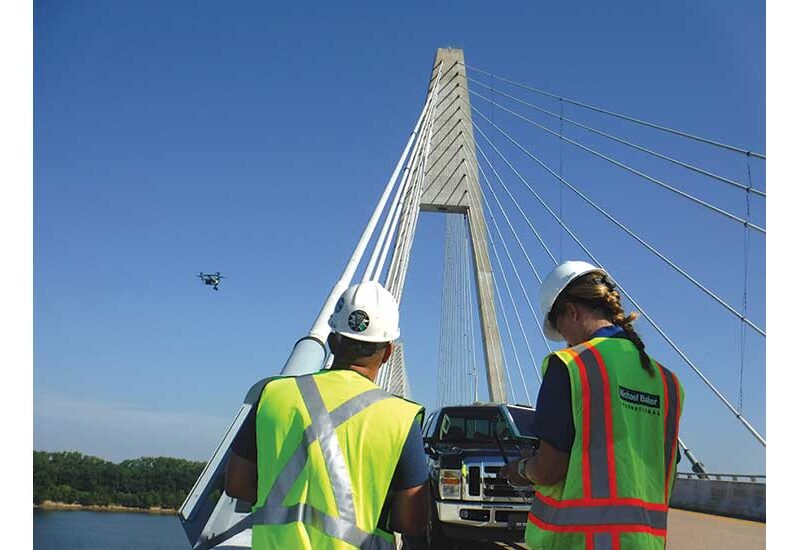
In the world of asset management and infrastructure maintenance, regular inspections are critical to ensuring safety, longevity, and regulatory compliance. Traditionally, these inspections have been time-consuming, costly, and sometimes hazardous for personnel. Enter UAV (Unmanned Aerial Vehicle) technology—more commonly known as drones—offering a faster, safer, and more cost-effective alternative to traditional inspection methods.
From heritage facades to regional council assets, drones are revolutionizing the way inspections are conducted. Here’s why professional drone inspections are the best choice for asset owners and managers across multiple industries.
1. Façade Inspections for Heritage Buildings
Heritage buildings are irreplaceable cultural assets that require meticulous maintenance to preserve their structural integrity and historical value. Conducting inspections using traditional methods often involves scaffolding, cranes, or rope access—costly and sometimes intrusive processes. Drones equipped with high-resolution cameras and LiDAR technology can capture detailed imagery of façades, identifying cracks, weathering, and structural vulnerabilities without physical contact. This non-invasive approach ensures heritage buildings remain undisturbed while enabling precise documentation for restoration planning.
2. Cell Tower and Broadcast Tower Inspections
Telecommunication and broadcast towers stand tall across urban and remote landscapes, playing a crucial role in connectivity and communication. Inspecting these structures manually poses significant safety risks to technicians who must climb extreme heights. UAVs provide a safer alternative, delivering detailed visual and thermal imaging of antennas, cabling, and structural components. Operators can remotely assess the condition of towers, detect corrosion, loose bolts, or misaligned equipment, and schedule necessary maintenance—all without compromising worker safety or disrupting service.
3. Bridge Inspections
Bridges endure constant exposure to environmental elements, requiring regular inspections to ensure structural stability. Traditional bridge inspections can cause traffic disruptions, require costly equipment like snooper trucks, and put inspectors in hazardous situations. Drones eliminate these challenges by providing high-resolution imaging, thermal scanning for detecting water ingress, and 3D mapping for structural analysis. With UAV inspections, engineers gain precise data without the need for lane closures or dangerous manual inspections.
4. Regional Council Asset Inspections
Regional councils are responsible for a vast array of public assets, including parks, roads, water treatment plants, and community buildings. Maintaining these assets efficiently requires regular inspections and proactive maintenance planning. Drones allow councils to quickly assess conditions, identify maintenance needs, and create digital records for infrastructure management. From monitoring flood-prone areas to assessing road conditions and building integrity, UAVs help councils make data-driven decisions while reducing costs and labor-intensive surveys.
5. Roof Inspections for Large Facilities
Large-scale facilities such as factories, aged care homes, hospitals, and commercial buildings require routine roof inspections to prevent leaks, structural damage, and inefficiencies in HVAC systems. Conducting manual inspections on expansive or multi-story buildings is not only time-consuming but also carries safety risks. UAVs streamline this process by capturing detailed aerial imagery, thermal data to detect insulation issues, and 3D models for comprehensive analysis. Facility managers can quickly pinpoint problem areas, reducing downtime and maintenance costs while improving operational efficiency.
Why Choose Professional Drone Services?
While consumer-grade drones are accessible, professional UAV inspections require expertise, specialized equipment, and compliance with aviation regulations. Certified drone operators bring the necessary experience, advanced imaging technology, and industry knowledge to deliver actionable insights. Additionally, professional UAV service providers ensure data security, compliance with CASA (or other regional aviation authorities), and the ability to integrate drone-captured data into asset management systems.
Conclusion
Drones are transforming asset inspections across multiple industries by enhancing safety, reducing costs, and improving data accuracy. Whether inspecting heritage buildings, bridges, communication towers, or large facility roofs, UAV technology offers a smarter, more efficient way to maintain critical infrastructure. If you’re looking to optimize your asset management strategy, investing in professional drone inspections is the key to staying ahead in today’s fast-paced world.
Ready to experience the benefits of drone inspections? Contact a professional UAV service provider today to discuss how drone technology can support your asset management needs.